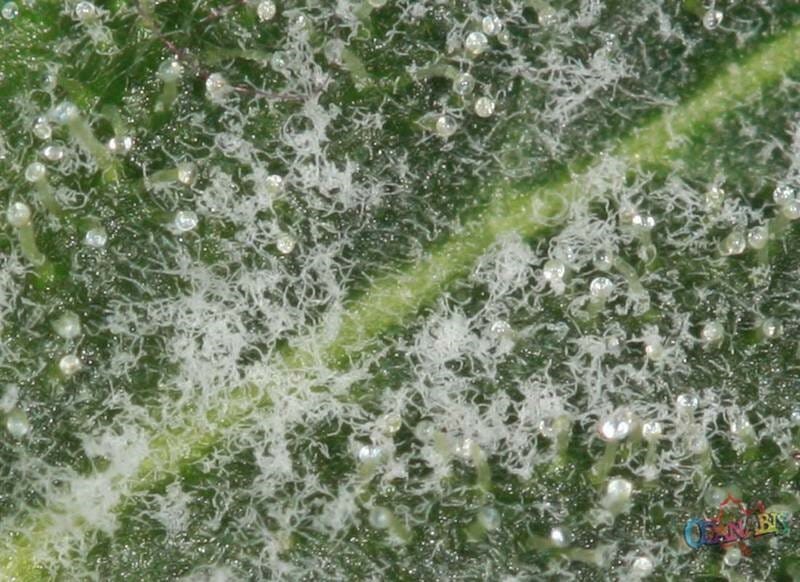The Scourge of Powdery Mildew
Prevention Is Best


Once powdery mildew develops, there’s always a chance that traces of it will remain in your harvest — even if you treat and try to eliminate it. Because of that, it’s best to prevent it altogether.
HOW To PREVENT POWDERY MILDEW ALTOGETHER?
CONTROL YOUR GROW ROOM CONDITIONS
- Keep your grow room “dry”
Powdery mildew thrives in damp, cool environments. To prevent it, keep your grow room’s relative humidity levels under 60%. Ventilate very well until the plants are in the last fortnight of flowering; then drop them below 50%.
- Be aware that already established spores can spread even when leaves are dry
Once established, powdery mildew does NOT need extremely moist conditions to spread. This is one of the reasons why it’s so important to prevent the development of spores in the first place.
- Opt for high temperatures, high light levels and relatively low RH
Warm temperatures and low light levels encourage fungi to grow and spread. High light levels and warm, relatively dry conditions (with RH below 50% after flowering) work best to stop infection before it starts.
Keep temps at 70 to 80°F without CO2 and 80 to 90°F with CO2 during the daytime. Nighttime temps should be no lower than 60°F, to avoid stressing plants.
- Use a high level air filtration system
A high level air filtration system with a MERV (Minimum Efficiency Reporting Value) of at least 16 will remove most spores from the air. A HEPA filter will remove 99+% of spores, but at greater cost.
MANAGE PLANTS CAREFULLY
- Don’t crowd plants
Place plants well apart from each other so that there’s plenty of ventilation and air flow. This will keep plants dry and help prevent infection from starting.
- Water the roots, not the leaves and stems
Since powdery mildew prefers moist plant leaves, keep them dry to inhibit growth.
- Try this natural powdery mildew preventative
Milk contains “good” bacteria that make it a very effective preventative for powdery mildew. Spray plants weekly with a mixture of one part milk to nine parts water. But be careful – other molds can develop if your mixture has more than 30% milk in it. Keep it to suggested levels to ensure protection.
Published on Mar 11 2015
Last Updated on Feb 27 2024
Categories: Agriculture, Mildew, Mold, Powdery Mildew
Tags: mildew treatment, plant disease, powdery mildew, prevent plant disease
